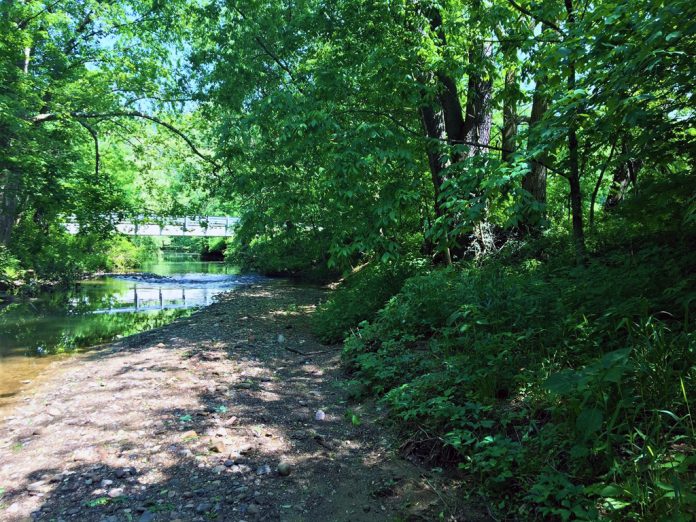A phrase we hear often in the soil and water world is “keep the clean water clean.” I remember hearing this not long after starting in the conservation field of work. It was straightforward and seemed simple, but it can often be overlooked. Many of the site visits I’ve been on lead to this phrase coming up one way or another.
What does “keep the clean water clean” mean? Well, it means exactly what it says. It means keeping the clean water out of contaminated areas and conveying this water back to streams and ditches to be carried downstream, all while staying clean.
This phrase can mean eliminating excess water from a manure storage facility or heavy use pad and other production facilities. It is important for barns, buildings and homes, because the water can cause foundation damage or erosion alongside them. Let’s look at a few ways to keep the clean water clean.
Runoff
Roof runoff, meaning gutters, downspouts and underground outlets, are important for many buildings to convey water away from the foundation. This can eliminate damage to the foundation or reduce erosion. On wooden barns, it will prolong the life of the wood and keep it from deteriorating and rotting.
An underground outlet pipe connecting the downspout to a proper outlet will finish the system of keeping the clean water clean. This will help improve production facilities for livestock or crop storage. Gutters and downspouts can eliminate a lot of excess water you otherwise don’t need and keep your facility looking nice and clean.
Diversions
Diversions can work great for surface water from rain events. Diversions can route the flowing water a certain direction around something. Some examples may be to keep water off a heavy use area feeding pad where manure may have collected or a pad where manure is being stockpiled for the winter.
They can also be used to divert water around homes and barns. Diversions will have a proper outlet at one end, whether it be a ditch or a catch basin with pipe to get to a ditch or stream further away.
Waterways
Grassed waterways are another great conservation practice to keep clean water clean. These can be tied in with a diversion as well by acting as the outlet for the diversion. Grassed waterways convey surface water to a suitable outlet.
Used in crop field settings a lot, grassed waterways help get surface water to an outlet without the water openly flowing across the crop field, carrying nutrients and sediment with it. Grassed waterways are great for preventing erosion on flat ground or down slopes where gullies could form instead.
When you are out and about next time, I bet you will notice a lot more of these practices than before. Look over your own farm and production facilities and see if you can add any of these conservation practices to help “keep the clean water clean.”














We should have clean water and the well-being and the government assistance of our youngsters is in question and is in danger.